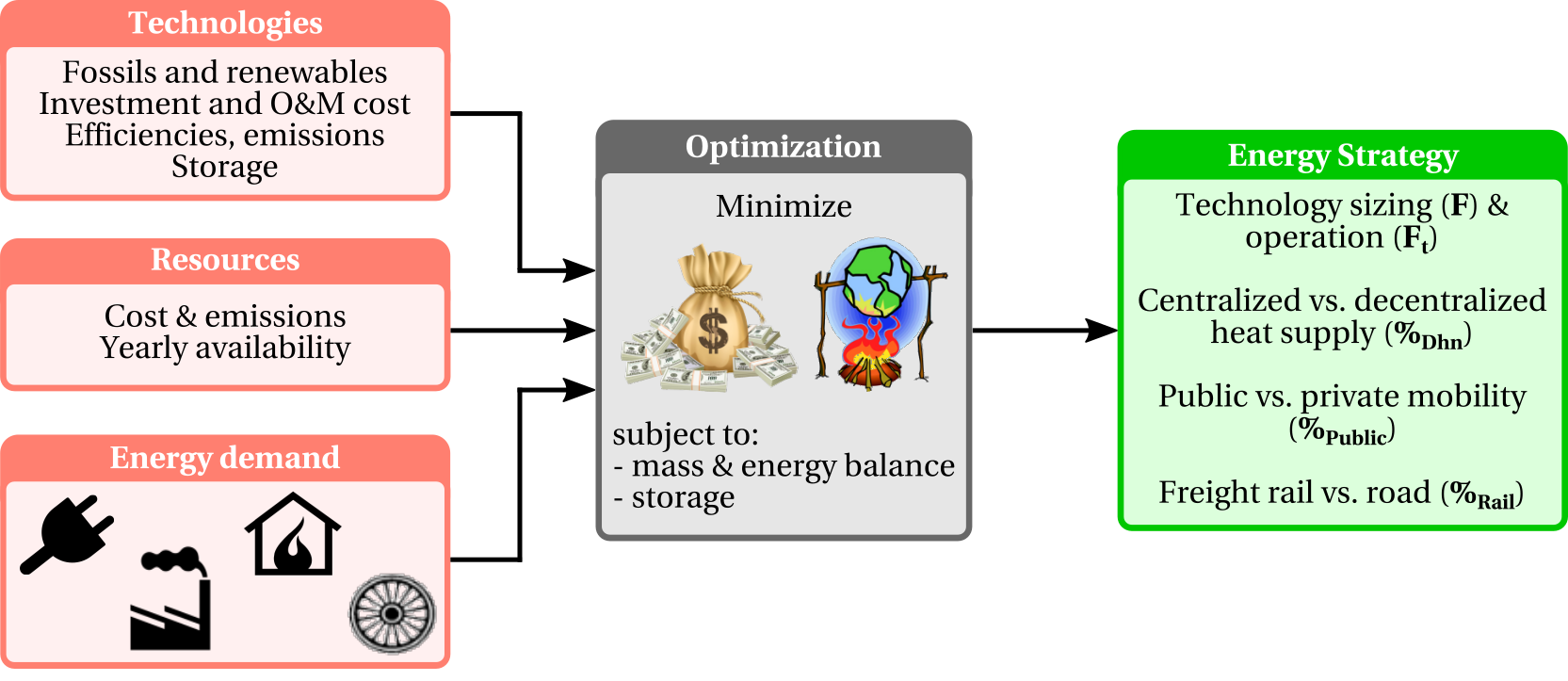- Class: Swiss Energy System
- Analytical approach: Bottom-up
- Purpose: Scenario analysis
- Methodology: Optimization
- Deterministic or stochastic
- Regions: Switzerland
- Sectors: Heating, electricity, mobility
- Demand sectors: Households, services, industry, transport (excluding flights)
- Generation technologies: All
- Energy carriers: All
- Time horizon: 2035 and 2050
- Time resolution: Montly
- Developer: EPFL
- Contact: Stefano Moret
- Documentation:
Swiss-EnergyScope (SES)
The Swiss-Energyscope (SES) model has been developed with the aim of enabling Swiss citizen to understand the challenges of the energy transition so that they can make informed decision, in particular during popular votes. SES is a mixed-integer linear programming (MILP) optimization model. Given the end-use energy demand, the efficiency and cost of energy conversion technologies, the availability and cost of energy resources, the model identifies the optimal investment and operation strategies to meet the demand and minimize the total annual cost or CO2 emissions of the energy system. It is a simplified, yet complete, representation of an energy system, including electricity, heating and mobility, with a multiperiod formulation accounting for seasonality and energy storage.
The model is publicly available here.

Model inputs
- Technologies: Investment and operation costs, efficiencies; and emissions
- Resources: Costs and emissions; and yearly availability
- Energy demand
Model outputs
- Electricity production: Technology sizing and operation
- Heat supply: Centralized vs. decentralized
- Mobility: Use of different technologies and modes
ETH development
The SES (ETH) is a branch of the original SES model including:- 24 typical days with 3 hours resolution, this allows for complementary analyses of peak and daily storage issues (for electricity and heat)
- and a more detailed representation of domestic heating systems with different archetypes
References
- V. Codina Gironès, S. Moret, F. Maréchal, D. Favrat (2015). Strategic energy planning for large-scale energy systems: A modelling framework to aid decision-making. Energy, 90(PA1), 173–186.
- S. Moret, M. Bierlaire, F. Maréchal (2016). Strategic Energy Planning under Uncertainty: a Mixed-Integer Linear Programming Modeling Framework for Large-Scale Energy Systems.
- S. Moret, V. Codina Gironès, M. Bierlaire, F. Maréchal (2017). Characterization of input uncertainties in strategic energy planning models. Applied Energy 202, 597–617.
- S. Moret (2017). Strategic Energy Planning under Uncertainty. PhD Thesis n. 7961, EPFL, Switzerland.